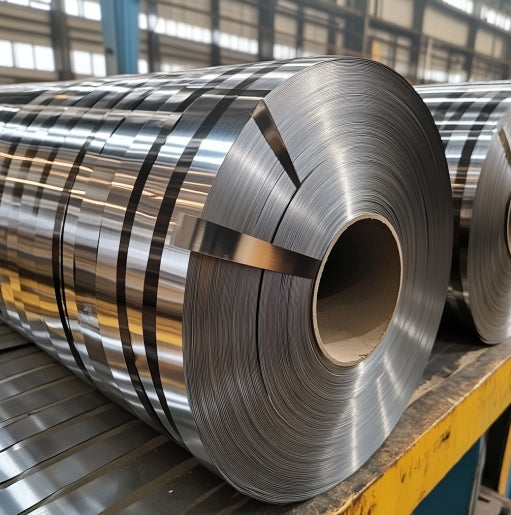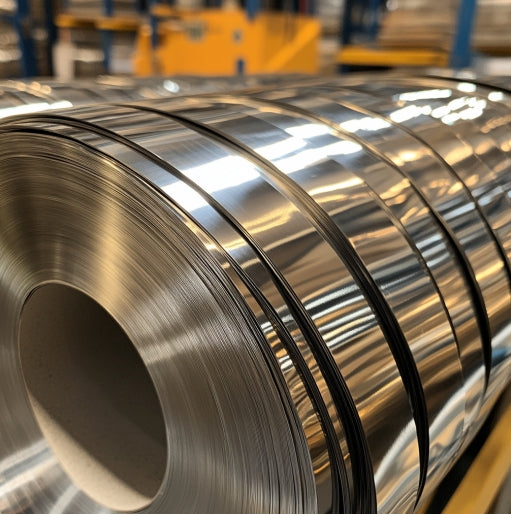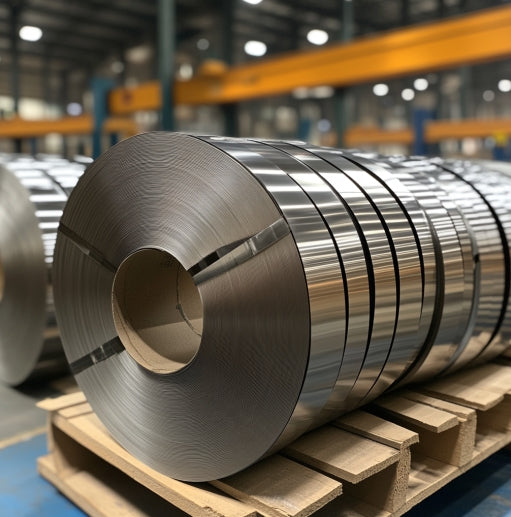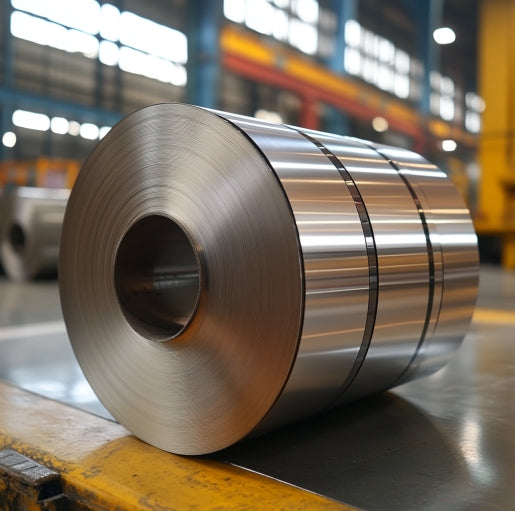StockSteel
Corrosion-Resistant Stainless Steel Transition Strip - 430/440 Series
Corrosion-Resistant Stainless Steel Transition Strip - 430/440 Series
Couldn't load pickup availability
Corrosion-Resistant Stainless Steel Transition Strip - 430/440 Series
Technical Specifications
| Property | Stainless Steel 430 | Stainless Steel 440C |
|---|---|---|
| Material Grade | AISI 430 (16–18% Cr, ≤0.12% C) | AISI 440C (16–18% Cr, 0.95–1.20% C) |
| Thickness | 0.5–6.0 mm (±0.03 mm tolerance) | 1.0–10.0 mm (±0.05 mm tolerance) |
| Width | 20–1,200 mm (custom slit coils) | 10–600 mm (precision ground edges) |
| Hardness | 85–95 HRB (annealed) | HRC 58–60 (quenched & tempered) |
| Tensile Strength | 485–620 MPa | 1,860–2,070 MPa |
| Yield Strength | 170–310 MPa | 1,450 MPa |
| Surface Finish | 2B, BA, brushed, or mirror polish | Precision ground, polished, or PVD-coated |
| Certifications | ASTM A240, EN 10088-2, ISO 9001 | ASTM A276, AMS 5630, RoHS |
Performance Attributes
Tensile & Bending Strength
The stainless steel transition strip in 430 grade offers a balanced combination of tensile strength (485–620 MPa) and ductility, making it ideal for architectural applications like stainless steel tile edging strip in humid environments. Its low carbon content minimizes carbide precipitation during welding, ensuring structural integrity. In contrast, 440C stainless steel achieves ultra-high tensile strength (1,860–2,070 MPa) and bending resistance, perfect for heavy-duty stainless steel seam strips in industrial flooring or machinery where wear resistance is critical.
Identification & Traceability
Each stainless steel transition strip is laser-marked with a unique code (e.g., "430-TS-3MM") that includes grade, thickness, and production batch. For 440C strips, a dual marking system (chemical etching + color coding) ensures compliance with aerospace and medical traceability standards.
Weight Calculation
Calculate the weight of a stainless steel tile edging strip using:
- 430 series: Density = 7.70 g/cm³ → A 2 mm × 50 mm × 10 m strip weighs 7.7 kg.
- 440C series: Density = 7.80 g/cm³ → A 3 mm × 30 mm × 10 m strip weighs 7.02 kg.
Why Stainless Steel Can Rust
While stainless steel transition strips resist corrosion, rust may occur under specific conditions:
- Chloride Exposure: Prolonged contact with seawater or de-icing salts degrades the passive chromium oxide layer, especially in 430 grade (lower Cr content vs. 316).
- Intergranular Corrosion: Sensitization at 450–850°C causes Cr-depleted zones in 430 stainless steel, but Nb-Ti stabilization (e.g., NTS430FSS) reduces Cr23C6 precipitation.
- Galvanic Corrosion: Contact with carbon steel or copper accelerates oxidation in acidic environments. 440C’s high carbon content improves pitting resistance but requires passivation for marine use.
Manufacturing & Processing
- Cold Rolling & Slitting: 430 stainless steel undergoes precision cold rolling (±0.03 mm tolerance) and slitting to produce stainless steel seam strips for HVAC and automotive trim.
- Heat Treatment: 440C strips are oil-quenched (1,010–1,060°C) and tempered (150–370°C) to achieve HRC 58–60 hardness.
- Surface Treatments: Electro-polishing for 430 strips enhances corrosion resistance in kitchen applications, while PVD coating on 440C improves wear resistance in high-friction environments.
Applications
- Architectural Trim: Stainless steel tile edging strip (430 grade) for moisture-prone areas like bathrooms and façades.
- Industrial Flooring: Heavy-duty stainless steel transition strip (440C) in chemical plants and food processing facilities.
- Automotive Seams: Stainless steel seam strips (430 grade) for exhaust systems and underbody protection.
Why Choose Our Stainless Steel Transition Strips?
- Material Excellence: 430 stainless steel meets ASTM A240 standards for oxidation resistance up to 1,500°F, while 440C complies with AMS 5630 for aerospace durability.
- Precision Engineering: ±0.03 mm tolerances ensure seamless integration of stainless steel tile edging strip in architectural projects.
- Corrosion Solutions: Nb-Ti-stabilized 430 strips reduce intergranular corrosion risks by 80% compared to standard SUS430FSS.
- Customization: Tailored widths (10–1,200 mm) and finishes (PVD, mirror polish) for stainless steel seam strips and transition profiles.
- Global Certifications: ISO 9001 and RoHS compliance guarantees reliability for export markets.







